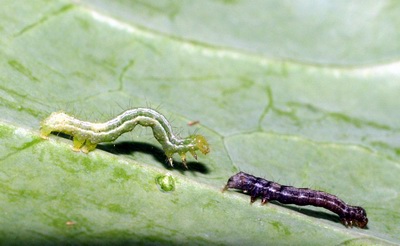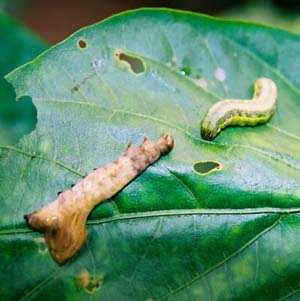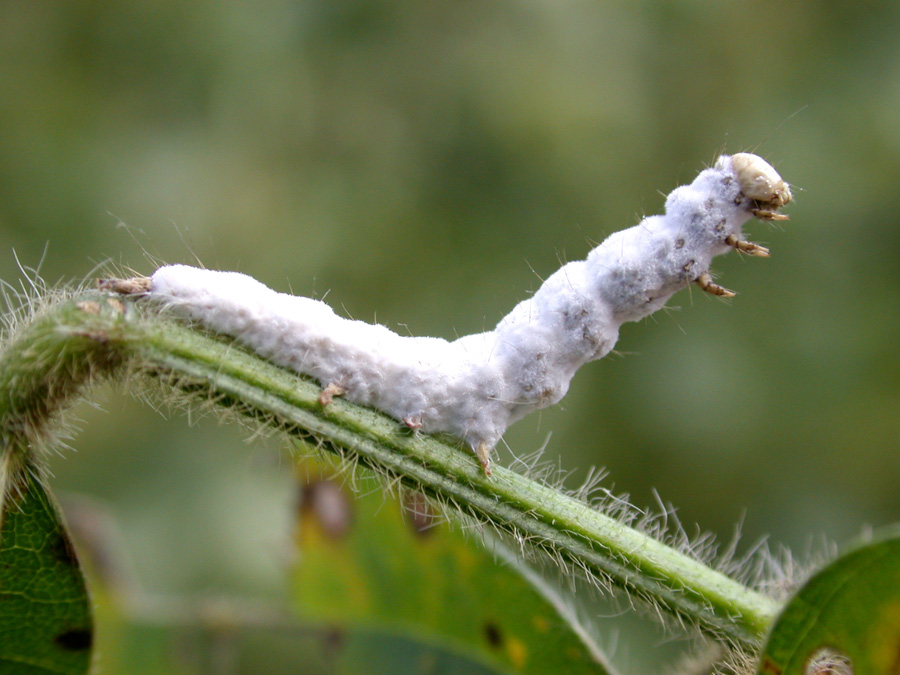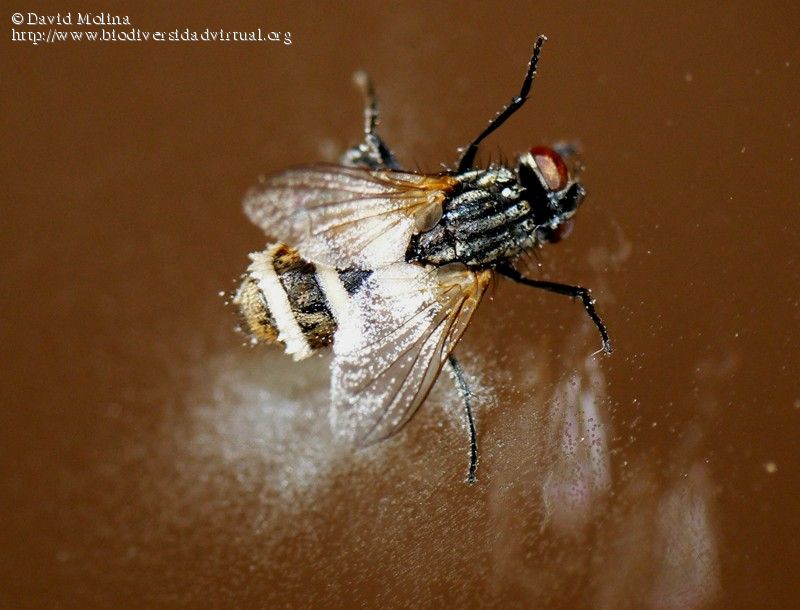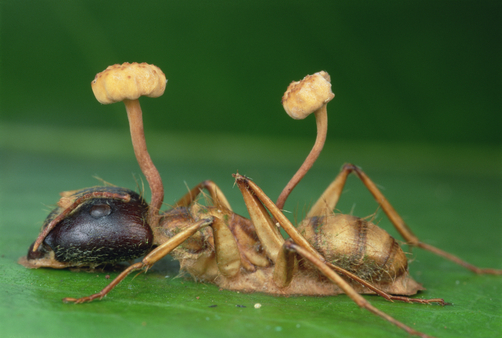The image above shows a insecticide product that contains Bacillus thuringiensis, or Bt, a naturally occurring soil-dwelling bacteria that produces proteins that react with specific receptors on the surfaces of cells in certain insect guts. The reaction disrupts the cell creating a perforation that allows the bacteria to move into the insect's body creating an infection that will eventually kill the insect. The whole story is far more complicated and add to that our ability to genetically engineer the bacteria's protein makes for interesting reading. To learn more click here.
|
Insects get sick, just like we do, and there are many kinds of pathogens that can make them sick.
Well, insects do get sick...but...sometimes it's not like we do. Click on the YouTube video below to see some parasitic Nematomorpha "horsehair" worms emerge from a mantis gut once it's in contact with water. Click here for the full story on their biology. Nightmarish. The other major pathogens for insects include bacteria and viruses. The image above left shows a green, healthy and a caterpillar blackened by the bacteria Bacillus thuringiensis. and viruses that literally melt certain types of insects as seen at above right.
|
There are basically three types of natural enemies: Predators, parasitoids and pathogens. This page focuses on pathogens.
But only a very few of these pathogens have the proper biology to make them useful in the context of biological control.
|
